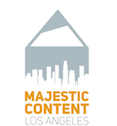The Plain English movement, now more than three decades old, promotes simple, straightforward writing in government, military and business documents. Its principles are quite simple — be clear, be brief and avoid technical jargon. The author of Plain English at Work put it like this: “Just write the way you talk.”
It sounds obvious, but the need for a concerted effort to promote simple writing is clear if you’re faced with a document or web site filled with overly formal language and jargon. The stubborn persistence of this kind of writing has created a cottage industry of consultants ready to help employees un-learn bloated writing habits that produce sentences like:
“Company A today announced a series of repositioning actions that will further reduce expenses and improve efficiency across the company while maintaining its unique capabilities to serve clients, especially in the emerging markets. These actions will result in increased business efficiency, streamlined operations and an optimized consumer footprint across geographies.”
Translation: We’re laying off employees to save money.
Regular, spoken English is the language of television, magazines, news outlets, social media (without the abbreviations, so far anyway), hallways and living rooms. It’s accessible, casual and grounded. It’s conversational. Sentences can start with “and” or “but.” Using contractions is essential. Split infinitives are OK. It’s not about impressing the reader with your knowledge of grammar and big words; it’s about communicating ideas quickly and clearly.
Concrete examples are essential to clear writing. Overblown corporate speak tells us that “she enhanced domestic security measures” when she really just “locked the front door.” Or that I am “contextualizing” instead of giving real world examples. It commences rather than begins.
I think it’s an uphill battle, but one worth fighting in the name of greater clarity and sharing of ideas. Plain English makes concepts easier to grasp quickly, much in the same way that info graphics and videos make information more visual. The written word shouldn’t be relegated to a dusty corner in favor of images when we can go a long way toward writing clearly.

